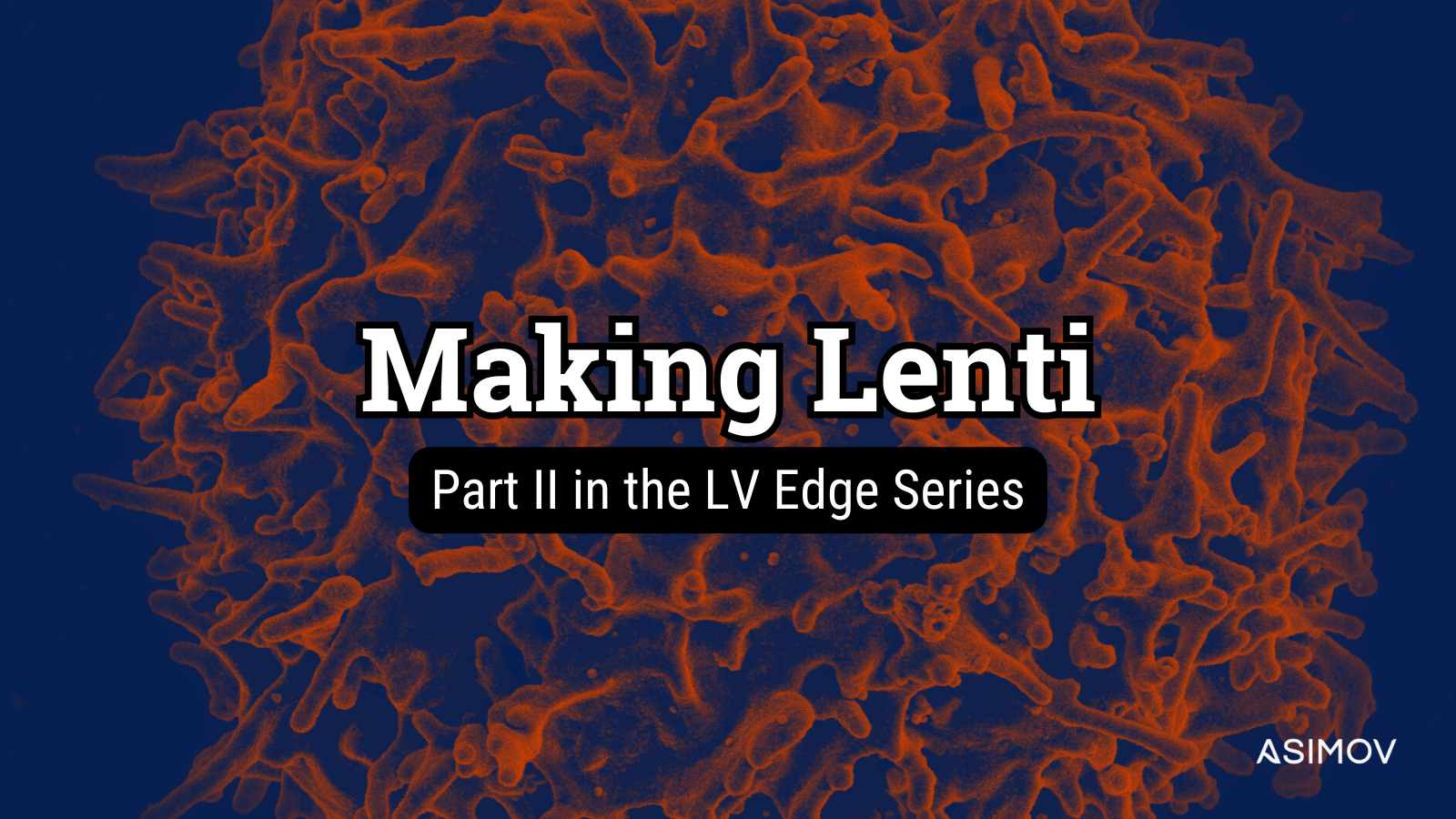Compilers for Biology
By Niko McCarty
Antibodies, the Y-shaped proteins that glom onto invading pathogens to quell infections, are often co-opted and adapted into medicines.
The F.D.A. has approved more than a hundred different monoclonal antibodies, which are used to treat everything from cancers to inflammatory diseases and infectious diseases. The first monoclonal antibody to garner FDA approval, back in 1986, was called Orthoclone OKT3; it’s an immunosuppressant that dampens the immune response for patients receiving organ transplants.
In the four decades since Orthoclone’s approval, antibodies have become the fastest-growing—and most widely sold—class of biological drugs. Humira, used to treat everything from arthritis to Crohn’s diseases and plaque psoriasis, had $21 billion in sales in 2022. Keytruda, the cancer therapy, sold $20.9 billion the same year. The vast majority of these antibodies are made using engineered Chinese Hamster Ovary (CHO) cells.
Oddly enough, engineering CHO cells to make antibodies has followed similar steps for the last twenty-plus years; it still requires a lot of trial-and-error. But we can speed up development times, while boosting titers and manufacturing success rates, by building model-driven in silico tools.
This is why, at Asimov, we’ve built a Genetic Compiler that automatically optimizes DNA sequences to boost antibody expression in CHO cells. It is the first tool in what will be a new suite of “Compilers for Biology.” In computer programming, compilers enable engineers to take abstract ideas and reduce them down to ones and zeroes that machines can understand. A biological compiler is similar: Scientists could declare some high-level goal, such as “I want to express this antibody in CHO cells,” and a Compiler would assemble it into As, Cs, Ts, and Gs—a language cells can understand.
Our Genetic Compiler for antibody expression is built using algorithms that we have developed in-house, based on both public and proprietary datasets. The algorithms automatically select and assemble DNA sequences that we predict will boost the total number of antibody molecules each cell produces. Using the Compiler, our typical titer ranges for antibody production have increased to 5-11 g/L before bioreactor optimization.
(Note: We’re offering a minimum CLD titer guarantee for IgG monoclonal antibodies to 5 g/L through our cell-line development services. If the lead clone does not meet this benchmark, we waive our service fee and all commercial use license fees.)
Making Antibodies
Most monoclonal antibodies sold on the market today are made from four interlocking proteins—two heavy chains and two light chains—that are encoded as DNA sequences. A genetic sequence encoding each chain is typically placed downstream from a promoter that ‘drives’ its expression. Pharmaceutical companies often use the human cytomegalovirus promoter, or a handful of other promoters, to do this. Once these genetic instructions are inserted into CHO, the cells begin to make antibodies.
Zooming into a cell, one might see the heavy or light-chain proteins emerge from the ribosome. A signal peptide stuck to the N-terminus of each chain shunts it into the endoplasmic reticulum, or ER, where two heavy chains quickly link up with one another. Then, the light chains attach to the heavy chains via disulfide bonds, which form an atomic bridge that stabilizes the “hinge”—the part of the antibody where the Y-shape begins to form—to create the final molecule.
Now this is where things get messy. The relative ratio of heavy and light chains, the number of DNA copies integrated into the genome, and many other factors influence how many antibodies a cell actually makes.

If the heavy chains do not “find” light chains, for example, they become trapped inside the ER. Excess heavy chains can glom up cellular pathways and cause toxicity. Antibodies that fail to mature are eventually translocated back into the cytosol for degradation by the proteasome.
Modern biologics manufacturing rarely accounts for this biological complexity. Most antibodies—even those that have a reputation for being “difficult to express”—are manufactured in much the same way. Generally, light chains are expressed at a slightly higher ratio than heavy chains, regardless of which antibody a pharmaceutical company is trying to make. But there are many cases in which these ratios should be skewed even more to reduce cell toxicity.
The Compiler
Our Genetic Compiler accounts for biological complexity, and all the weird ways that antibody manufacturing can go wrong inside the cell. Using the tool is also easy, because there are only two inputs: the amino acid sequences of the light chain and heavy chain for the monoclonal antibody of interest, and a check-box that asks if the antibody is “known to be difficult to express.”
The Compiler takes this information and selects promoters from our validated catalog of genetic sequences that it predicts will appropriately balance heavy chain and light chain levels. If an antibody is known to be difficult to express, then promoters are selected that boost light chain expression and dampen heavy chain expression, such that there are plenty of light chains to couple up with heavy chains in the ER.
Next, the Compiler selects signal peptides to optimize secretion of each antibody, based on data we’ve collected in-house. And finally, every sequence is codon-optimized using our proprietary model. All of these tools run inside of Kernel, in your browser, which means scientists can click “Run,” walk away, and receive a notification when their antibody-expressing plasmids have been designed. Each plasmid appears in the Kernel workspace once it’s ready. Sequence-verified DNA can also be ordered directly to your door, along with CHO cells, through our cell-line development services.

We’ve tested the Compiler on 13 different monoclonal antibodies so far, including trastuzumab, nivolumab, rituximab, adalimumab, and other FDA-approved molecules. Our experiments aim to understand how genetic sequences change the ultimate titer of antibody production. In an experiment with trastuzumab, we found that flipping the order of the light chain and the heavy chain on the plasmid—while leaving everything else untouched—changed expression levels by about 3x.
Our goal at Asimov is to understand biology so that we can build software that helps scientists design better biological systems. We’ll roll out more Compiler-like tools soon, including options for lentivirus and AAV manufacturing. The Compiler will be available in Kernel soon. Click the button below to sign up for the waitlist.
Written by Niko McCarty
Contributors: Kevin LeShane, Scott Estes, Ben Gordon, Georgian Tutuianu, Alec Nielsen, Arturo Casini, Alina Ferdman





